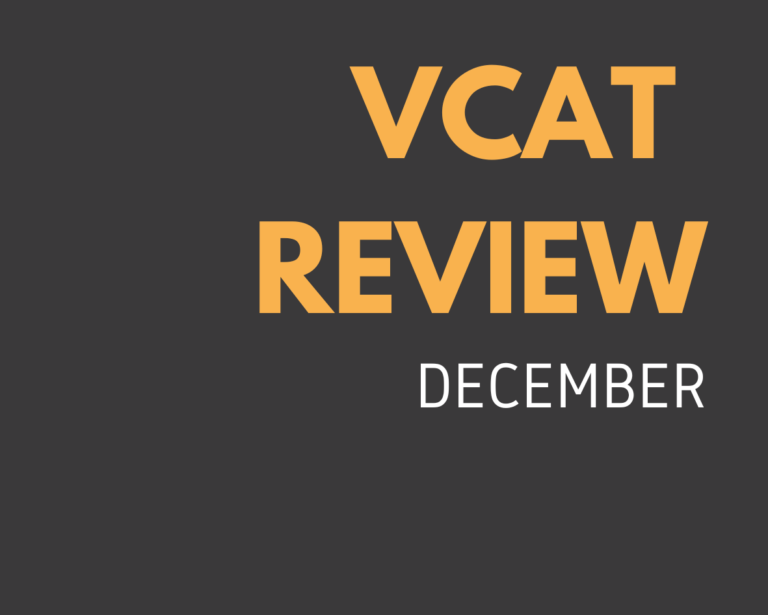Several decisions of interest were reported including:
Studio Homes Victoria Pty Ltd v Brimbank CC [2022] VCAT 1371 which was perhaps the first reported decision under the relatively new Fast Track list. In this matter, the Tribunal grappled with whether a proposal was for a rooming house or for dwellings. In determining that the proposal was in fact for dwellings the Tribunal concluded:
95. While the facilities within the building and each ‘room’ in particular exhibit some ‘hallmarks’ of a Rooming house, having regard to RTA and associated regulations, I find that the studios are more appropriately defined as self-contained accommodation for the purpose of that legislation.
96. Under planning scheme definitions, I consider that the real and substantial use of the land is for a form of Accommodation in a series of self-contained studios, supplemented by additional facilities that could be used in common at the election of a particular resident.
97. I accept that the development overall could meet the technical requirements for the exemption in Clause 52.23. More fundamentally however, I consider that the proposed use and development is not properly characterised as a Rooming house, which precludes it from taking the benefit of these exemptions.
This decision again goes to the notion of ‘real and substantial purpose’ of a proposed use and highlights the complexities and interpretation skills required when dealing with proposals that potentially meet two land use definitions particularly those which have many similar characteristics.
Leon Park Pty Ltd v Mornington Peninsula SC [2022] VCAT 1373 involved a Practice Day Hearing at which Council’s representative sought for a Hearing to be conducted online. Notably the matter had been listed originally for an online Hearing and was subsequently reconfirmed. Approximately six weeks out from the Hearing, however, the Tribunal advised that the Hearing would now be heard in-person. Council’s representative had intended to attend the online Hearing from a location outside of Melbourne hence their request for the Hearing to revert to online. In refusing to relist the matter for an online Hearing the Tribunal stated:
20. I understand and accept that the conduct of VCAT’s business primarily online has allowed parties and their representatives to appear from varying locations including whilst on leave or when businesses were closed. However, that convenience has changed and will continue to change rapidly in the post restriction environment.
21. I also accept that it may be more convenient for parties to appear online in perpetuity, but ‘convenient justice’ is vastly different from ‘access to justice’. Convenience imports a notion of ease whereas ‘access’ deals with opportunity or means. Convenience permitted PED to deliver justice in the darkest of times of the pandemic environment. However, the time has come where the delivery of justice is to be optimised including by the return to an in person environment.
While the Tribunal did not rule out in-person matters being instead heard online, it is clear that a persuasive argument based on ‘access’ would be needed.
Caratti v Monash CC [2022] VCAT 1374 involved a two dwelling development with the following paragraph of note:
54. The garden area is calculated on the plans as 279.52sqm and 37.03%. The General Residential Zone requires a garden area of 35% for a lot of this size. The garden area plan (Sheet 4 Rev C) contains no dimensions, only hatched areas. The Council estimates that some of the edges of hatched areas may have a width below one metre in which case it should not be included in the garden area calculation. Council has imposed condition 1(g) to update this plan to ensure the one metre minimum is correctly shown whilst retaining compliance with the 35% minimum. Any correction is likely to be minor, and the Council and the respondent permit applicant are in agreement that the minimum requirement will continue to be met. Given this agreement and the fact that the requirement is exceeded in the proposal, the imposition of this requirement is a point of clarification rather than endeavouring to bring a non-compliant proposal into compliance (i.e. a development with less than 35% garden area).
Chow v Yarra CC [2022] VCAT 1391 was a conditions appeal regarding the interpretation/ application of Clause 54-04.6 (Standard A15 – Overlooking). Council essentially sought for a level of screening in excess of what would ordinarily be required by the Standard. In deleting the condition, the Tribunal in part made the following comment of some interest:
13. I agree with the permit applicant that Council’s requirement to take the measurement to 1.7 metres above ground level as specified in the condition differs from the standard provided in the building regulations and therefore the condition should be deleted in accordance with sections 62(4) of the Planning and Environment Act 1987 because it does differ from the building regulations.
The relevant part of s62(4) states a condition must not be ‘inconsistent’ with the Building Act 1993.
Daemen v Kingston CC [2022] VCAT 1445 concerned whether an email with relevant attachments but no fee constituted an ‘informal application’ for a Certificate of Compliance. In striking out the proceeding, the Tribunal in part stated:
34. Although the statutory regime for the application for a certificate of compliance does not prescribe a form in which an application is to be made, it is clear from the requirement that such an application must be accompanied by a prescribed fee, the act of applying for a certificate of compliance is a distinctly identifiable act.
This is perhaps different from applications under S47 which also require a fee to be paid but where S54 allows for more information to be formally requested.
De Bono v Brimbank CC [2022] VCAT 1488 involved a three dwelling development. It was notable that whilst being a relatively small scale development, the Tribunal supported the application in broad terms but remitted the permit application back to Council to consider, and only consider, acoustic impacts and necessary amelioration measures from the nearby Calder Freeway which it was unsatisfied with having been provided with no up-to-date acoustic assessment or acoustic evidence.
Jasbe Mordialloc Pty Ltd v Kingston CC [2022] VCAT 1475 involved a proposed service station and convenience restaurant located close to Moorabbin airport. The decision was notable in that the Council appeared to principally rely on an objection from the Moorabbin Airport Corporation who in turn did not appear to be able to put a compelling argument before the Tribunal. The permit applicant on the other hand called expert aviation evidence in support of its position. The Tribunal, however, refused the grant of the permit stating managing risk is not just about the probability of an event occurring but also the consequences if that event occurs. The Tribunal stated:
8. Council fairly acknowledges that if it were not for issues of airport aviation safety, it would find the proposal acceptable. The position of Moorabbin Airport Corporation (MAC) is curious, difficult to comprehend and at the hearing its submission was of little assistance to the Tribunal in understanding the basis for its objection.
…
57. At the hearing we had the benefit of expert evidence from Mr Jennings, together with his answers to questions from parties. We record again that we found MAC’s contribution both at the hearing and in the supplementary submission to be of limited assistance.
…
60. Based on the material available to us, we are satisfied that the proposal does not contravene relevant Acts and regulations concerning height of structures, lighting and so forth. We also accept that a permit requirement is not required under the AEO1 or DDO4.
61. However, we are also required to consider policies for airports and airfields at clause 18.02-7S and 18.02-7L – Moorabbin Airport. Whilst these mostly have a focus on aircraft noise and preventing or limiting the approval of noise sensitive uses that may be impacted by aircraft noise, there is also a need to consider increased risk to public safety at the end of runways.
62. Mr Jennings provided detailed comments about each of guidelines in the National Airports Safeguarding Framework (NASF) which is referred to as a policy document to consider as relevant in clause 18.02-7S (our emphasis).
63. We acknowledge Mr Taylor’s submission in response to MAC’s supplementary submission that a challenge for the Tribunal is to determine what weight to give the NASF given they remain outside the planning scheme (neither an incorporated nor background document) and which are general and require adaption to particular airport circumstances. We agree that the NASF may not be included in the planning scheme, but clause 18.02-7S does state that they are to be considered as relevant…
…
71. Despite assurances to the contrary, our main concern with the proposal are the consequences of an aircraft crashing onto a site where people are congregating at the convenience restaurant and service station.
…
84. As we have discussed, the probability of an accident involving an aircraft crashing onto the site is exceedingly small. But managing risk is not just about the probability of an event occurring but also the consequences if that event occurs. Aircraft crashes may be rare, but as photos tendered at the hearing show, they do occur, including one in proximity to the site in Scarlett Street.
85. Whilst we accept there are positive benefits to the wider community in approving the proposed development, we are not persuaded those benefits outweigh the potentially catastrophic impacts in the rare likelihood of an aircraft crashing onto this site where up to 85+ people could be congregating at any one time.
Glossop Town Planning enjoyed another busy month appearing before the Tribunal either as an advocate (Hew Gerrard) or expert planning witness (John Glossop). If Glossop Town Planning could potentially be of assistance with any VCAT related matters, please contact our office on 9329 2288 or via email at mail@glossopco.com.au.


